Rail
Ignore the Rail at Your Own Risk
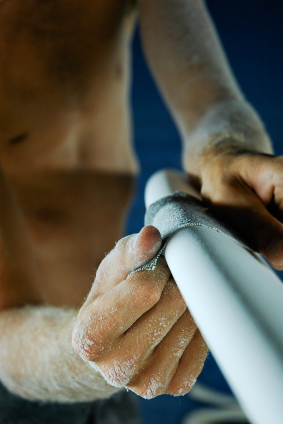 What is the difference between the different rail designs? Have you ever heard the saying "only a poor carpenter blames his tools"? While a lot of novice surfers struggle to maneuver their boards, it is important to remember that an advanced surfer could probably tear your local wave to shreds on that same board. Or could he?
What is the difference between the different rail designs? Have you ever heard the saying "only a poor carpenter blames his tools"? While a lot of novice surfers struggle to maneuver their boards, it is important to remember that an advanced surfer could probably tear your local wave to shreds on that same board. Or could he?
While professional surfers can ride most anything, they also happen to be the pickiest people about their equipment. They tend to have 8 or 9 boards in their quivers because they need to surf well in various types of waves and conditions. They want to ride the most appropriate board. Most of these boards will fit into one of three categories (fish, standard shortboard, step-up board). What vary more than anything are the more subtle changes to design characteristics.
Rail Design
The rails extend from the nose of the board to the tail. They will be thicker near the center of the board and narrower towards the nose and tail. Depending on the shape, a rail will help us make turns through the water, catch speed, and provide more flotation. There are different ideas regarding which rails are right for which conditions, but generally speaking, there are two types of rail design: soft and hard. Soft rails are rounded with no hard edges. The transition from the rail to the bottom of the board is very smooth. A hard rail (also called a down rail) is more squared off, sloping down in a more distinct manner and may form a corner or edge with the bottom.
Performance
Harder rails best suit the modern shortboard. They will knife into the water's edge easier, making it plane faster and turn quicker. This is because that hard edge, especially in the tail, allows the water to abruptly release from the board's rails, creating more maneuverability and speed. If the surfer is so inclined to use his rails rather than rely heavily on the fins, it also allow for long drawn out rail turns. On the downside, hard rails with edges make pivotal turns more difficult. These rails are generally better in large, steep and hollow conditions. The hard edge allows the board to gain a firm hold in the wave and remain stable at faster speeds. The compromise is in rail volume. Even a shortboard must have thicker, softer rails in the center of the board if it is to float the surfer. The nose and tail volume will remain thinner and harder for speed and performance.
If hard rails are better suited for high performance shortboards, then softer rails are most common on longboards and small wave shortboards. Soft rails are more forgiving, meaning you are less likely to catch an edge and bog the rails into on sloppier wave face. The downside is they produce enormous drag and will not turn as easily on the rail in larger surf. In contrast, soft rails will allow a surfer to take full advantage of a fin's turning radius. Turning from near the tail should be much quicker and require less effort in smaller surf. Fuller, softer rails will help you paddle into more waves and also help you maintain speed in the flats of the wave. Although full rails are also more difficult to sink, this will translate into more stored energy during a turn and the release of that energy coming out of the turn (commonly known as drive).
Most surfers are better off with a medium rail. This should provide the advantages of both a hard and soft rail, while downplaying the negatives. A medium rail will produce a fast board in steep waves, while still allowing the freedom to use the fins creatively in surf that isn't so steep. You should feel fairly stable with medium rails and be able to turn in a tight radius. The most common example is a "tucked under rail". This is a round rail with a tucked under edge that will provide some release, but also offers a smooth and forgiving ride.
Types of Rails:
- Round Rail - a rounded rail looking almost like a complete semi-circle
- Down Rails - A rail coming to an edge at the bottom of the board
- Rolled Rails - Down Rails that are rolled under the board
- Egg Rails - similar to Round Rails more egg shaped
- 50/50- A description of the point where the bottom of the rail meets the top. This indicates the meeting point is in the middle of the rail.
- 60/40 - Again, this is a description telling us the rail's point is slightly lower than center.

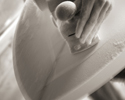
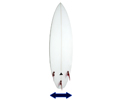
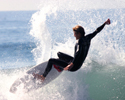


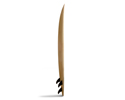
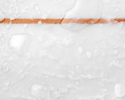
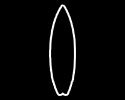

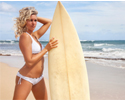

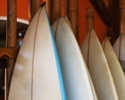
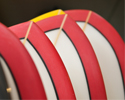
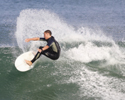
1 Comment